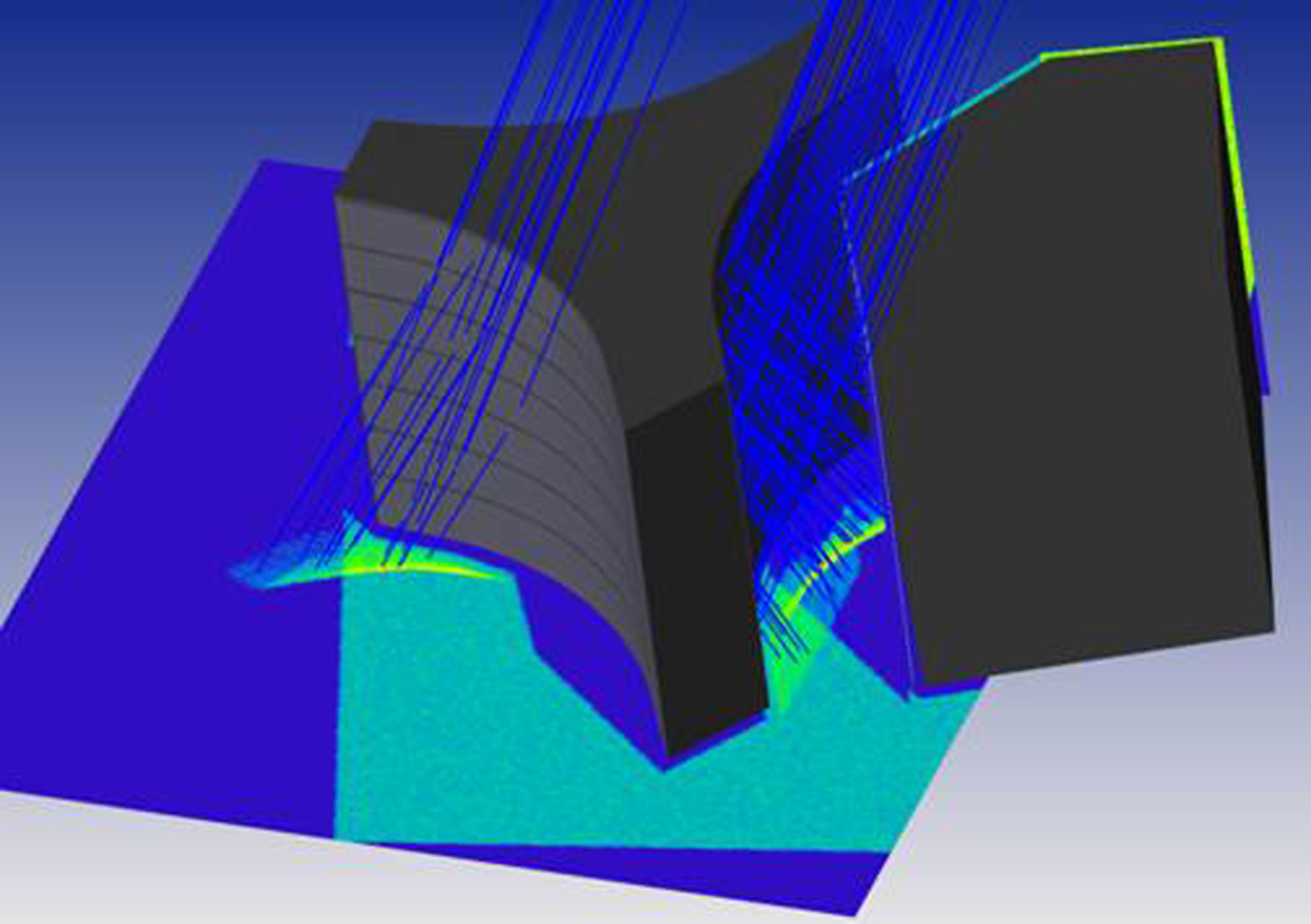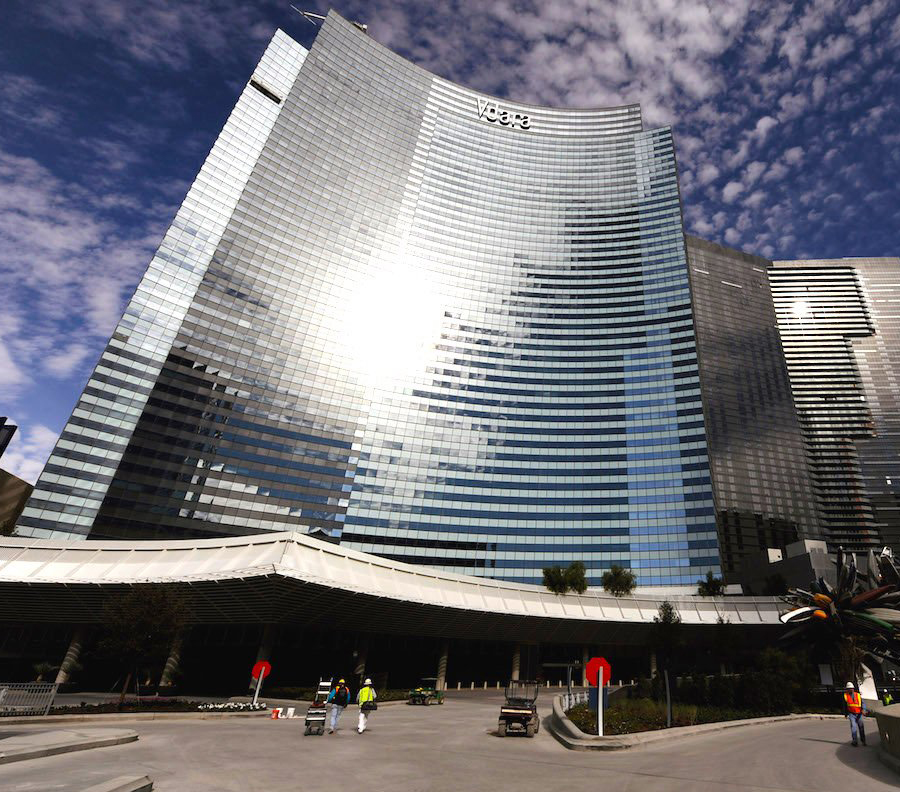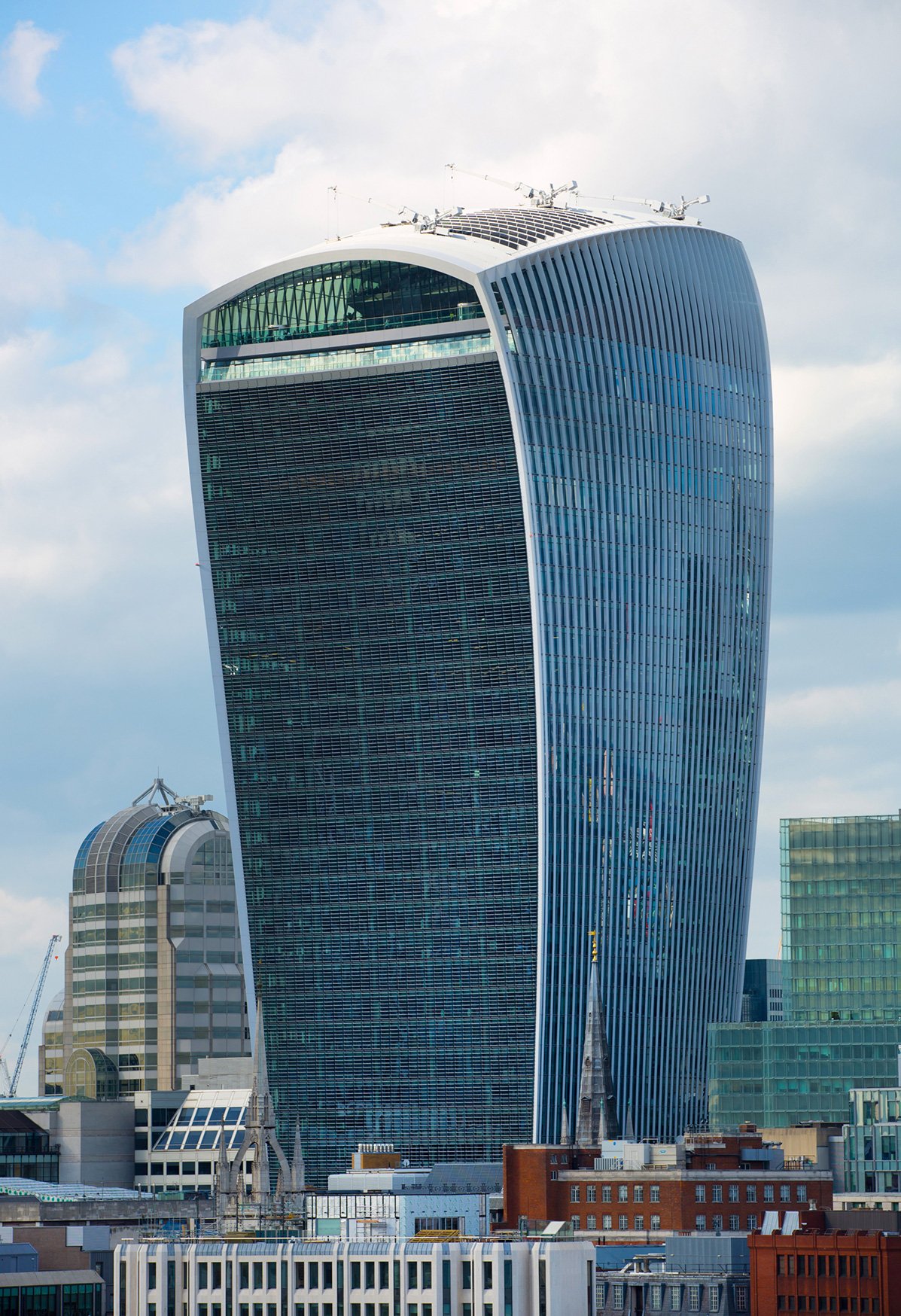


Radiation concentrations through concave curved glass façades of tall buildings can cause material degradation. For example, seals in façade elements can become damaged due to the effects of heat. This bundling of rays also causes extreme glare, which can endanger safety in the vicinity of these buildings.
The artificial word “fryscraper” derived from the words “to fry” and “skyscraper” has become established as a synonym for these effects in professional circles. The best-known example of this “burning-glass” effect is the so-called "Walkie Talkie" Building in London, which caused damage and intense glare problems in the urban neighborhood due to a concave glass façade. In a cost-intensive process, the 160 m high-rise façade had to be retrofitted with specially designed solar shading elements (“brise-soleil”).
New analysis methods and prevention strategies
In several projects at Fraunhofer IBP, comparable problems with façades were dealt with and prevention strategies were developed in collaboration with customers - ideally already in the planning phase or after the buildings had been constructed.
Methodology
For this purpose, a numerical assessment procedure was developed:
1) In a first step, the radiation concentration (focal points, caustics) or glare problems are analyzed on the basis of CAD and accurate material models: to what extent do the concentrations occur, where, and for how long?
2) During this process, critical spots are identified by determining where and under which relative angles radiation is emitted from the reflecting façade.
3) Based on this information, prevention strategies can be developed already during the planning phase - or after construction, for instance using low-reflective or light-scattering glass, (partially) opaque shading grids made of metal, etc.